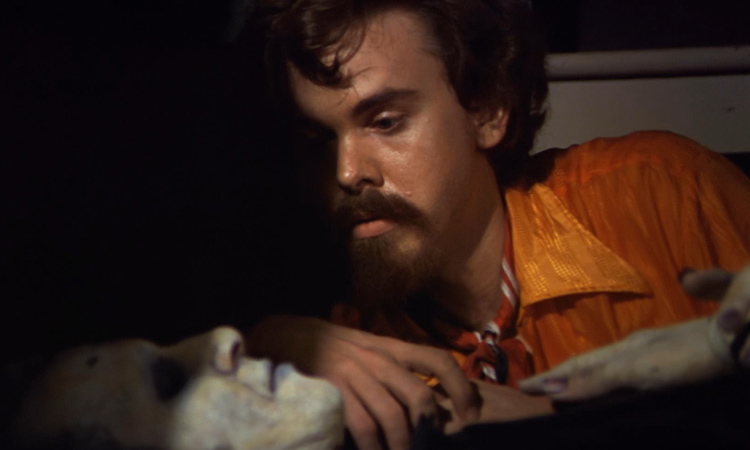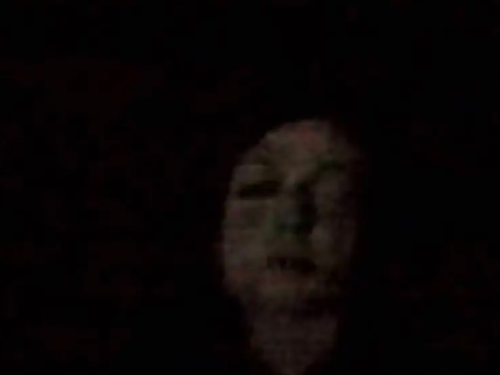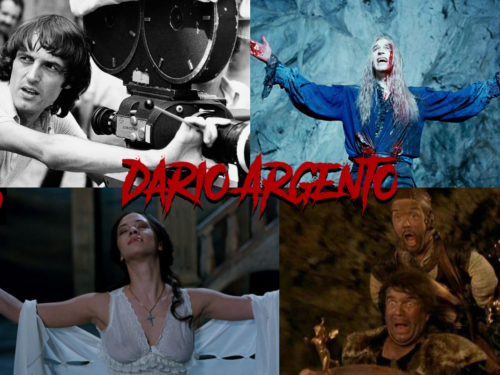Before making two of the most beloved Christmas films of all time, Clark directed this eccentric and bleak horror-comedy on the cheap in Florida
Many filmmakers get their start making cheap horror flicks, but Bob Clark had a unique run with scary movies before finding greater success as a studio director. Known primarily for helming both Porky’s (1981) and the holiday classic A Christmas Story (1983), Clark made three horror films in his early career — most notably 1974’s Black Christmas, an early slasher film that predates John Carpenter’s Halloween by four years. That same year, he also released Deathdream (a.k.a Dead of Night), a supernatural tale of a deceased Vietnam soldier who arrives home just after his family receives notice of his death.
But Clark’s first horror film, Children Shouldn’t Play with Dead Things (1972), while not being his scariest or strongest — those distinctions both go to Black Christmas — is by far his strangest effort. The film follows the exploits of a theater troupe, led by their flamboyant and arrogant director Alan (Alan Ormsby, who co-wrote the script and created the gore effects), as they sail to a creepy graveyard island off the coast of Florida. The actors plan to assist their director in staging necromantic rituals, but when they arrive, they find Alan has prepared a series of cruel theatrical pranks.
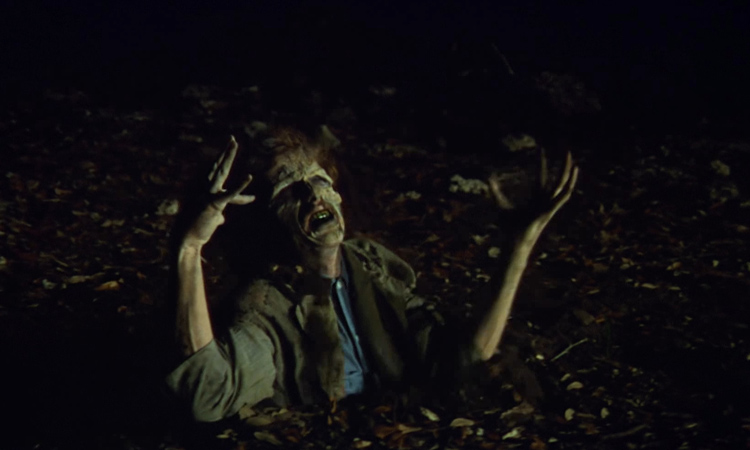
Children Shouldn’t Play with Dead Things is billed as a horror-comedy, but I should warn at the outset, the humor in this film is not very funny — don’t get hopes up for sharp satire or endearing goofiness. For most of the film’s first two acts, the characters carry on like a second-rate college improv group. They exchange excruciatingly unfunny one-liners as they dig up a grave and try to upstage each other. The troupe, decked out in striped trousers and flower dresses, could pass as rejects from the Merry Pranksters; the group includes a hippyish Brando-type (Paul Cronin), a spaced-out spiritualist girl (Anya Ormsby) and a goofball teddy bear (Jeff Gillen, better recognized for playing the department store Santa in A Christmas Story) who wets his pants at the expense of Alan’s gags. Most of the characters cannot stand Alan, yet they put up with his antics and showboating for fear of being kicked out of the company.
After they believe their ritual to raise the dead failed, the troupe breaks into an abandoned house on the island. Their back-and-forth banter starts to turn cruel and Alan’s pranks become increasingly disrespectful to the island and its inhabitants. He goes too far when he decides to take Orville, the corpse they dug up for his ritual, as a prop bride in a fake wedding. At this point, the film nearly wears out its welcome; while never boring, the scenes of drawn-out dialogue in the house start to outweigh the subtle hints of the danger lurking around the troupe as they grow increasingly annoyed with their smarmy leader. Clark and Ormsby make a lot out of a little with the creepy island setting and the thick fog that drapes over the exterior scenes, but once it moves inside, you start wishing these people would just hop back on the boat and leave.
But then Clark opens the floodgates. In its compact and uncompromising burst of a finale, it is hard to keep your jaw from dropping as all hell breaks loose on the island. It’s common for low-budget horror films like this to use their humor to distract or take self-aware jabs at their lack of aesthetic polish. But Children Shouldn’t Play with Dead Things makes no concessions. It may set itself up like a goofy romp, but it sure doesn’t end like one. With only two low-budget features under his belt at the time — including the recently restored She-Man: A Story of Fixation (1967) — Clark handles the zombie arrival with a mastery of atmosphere and pacing. Immediately following the rituals, zombies begin to appear slowly; hands pop out of the soil one at a time, barely hinting at what’s to come. Then the entire population of the graveyard suddenly turns up the soil and attacks. The shift into total mayhem is done so swiftly that, like the characters, the audience barely has time to prepare itself.
Where even George Romero would dress up zombies as cheerleaders or Hare Krishnas to differentiate among his undead masses, Ormsby makes each zombie look unique without gimmicky costumes. Some of the zombies are more human-looking with deep-set eyes, running with flailing arms and limping gaits, while others are more abstracted, with thick layers of decomposing flesh caked and mounded upon their faces. Clark pans across the graveyard as the dead begin to rise, allowing each individual face to engrain its mug upon the viewer’s psyche. When a group of the living dead come crashing through a door late in the film, Clark uses slow motion not as a typical suspense generator, but to accentuate how terrifying each figure is while charging toward the camera. So many zombie films tend to think more is better, but where the small horde breaking down the door in Dead Things is rendered with such a variety of striking details, the weight of the moment crashes down with a more visceral force than the climax of any big budget film or TV show that can afford to zombify thousands of faceless extras.
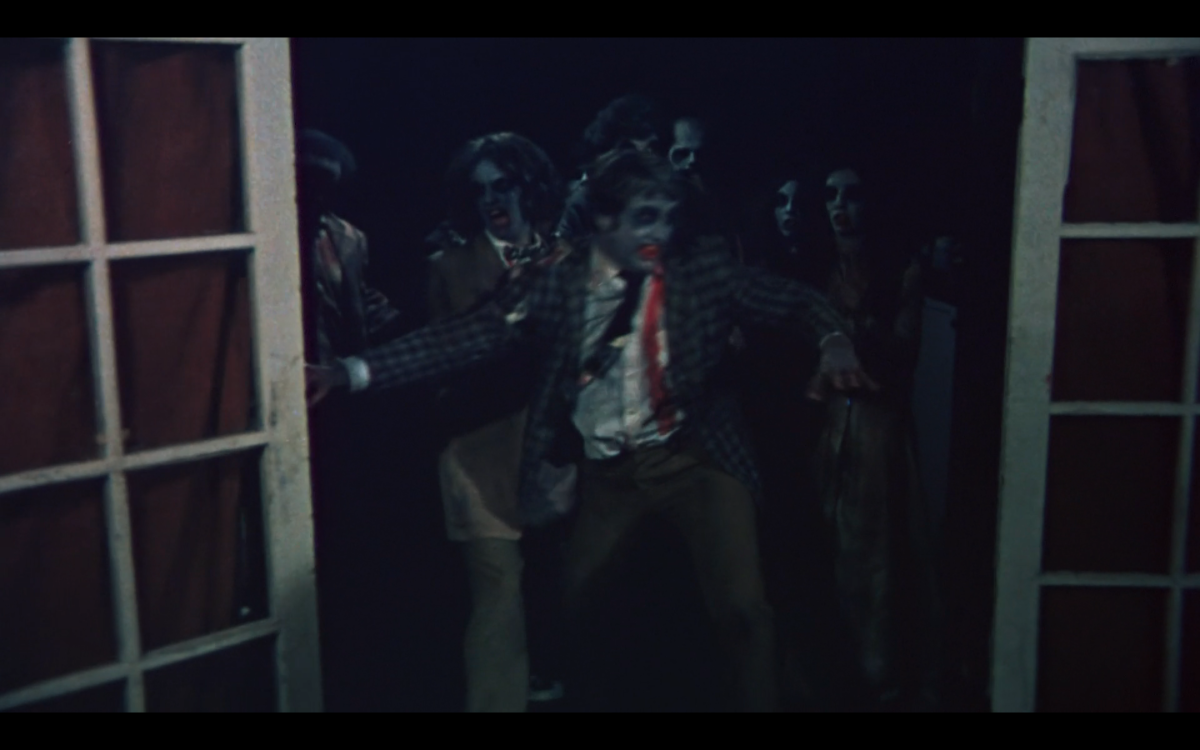
The film is remarkably bleak in its depiction of what it takes — or if it’s even possible — to survive a zombie invasion. Most distressing is that to be resourceful or brave in this film means absolute certain death. Whenever a character decides to lead the charge toward safety, the reward for their heroic gesture is to be placed first in the pecking order. The more cowardly characters hang in the back, making their escape — for the time being — as the more proactive individuals are mauled to death.
This bleakness runs throughout all three of Clark’s early horror films, which can be quite a surprise for anyone discovering them through his hit comedies. Deathdream features a similar third-act jolt as a loved one begins desperately wreaking havoc upon his family and friends; Black Christmas leaves the viewer as helplessly in the dark as it does its characters, with an ending that resolves almost nothing and places the “survivors” in a diabolically vulnerable position. Clark asked to be credited as “Benjamin Clark” on Children Shouldn’t Play with Dead Things, apparently because he feared being type-cast as a genre filmmaker. While it’s no Black Christmas, Children Shouldn’t Play with Dead Things is far from something he should have felt the need to distance himself from. Its strange pacing and back-loaded action actually create a bizarrely rewarding experience, making this an oddball early gem in his filmography.
Find the complete October Horror Archive here:

Purchase Children Shouldn’t Play with Dead Things on 4K UHD or Blu-Ray
Stream Children Shouldn’t Play with Dead Things here
Follow our list of the 31 Days of October Horror on Letterboxd
(Split Tooth may earn a commission from purchases made through affiliate links on our site.)

